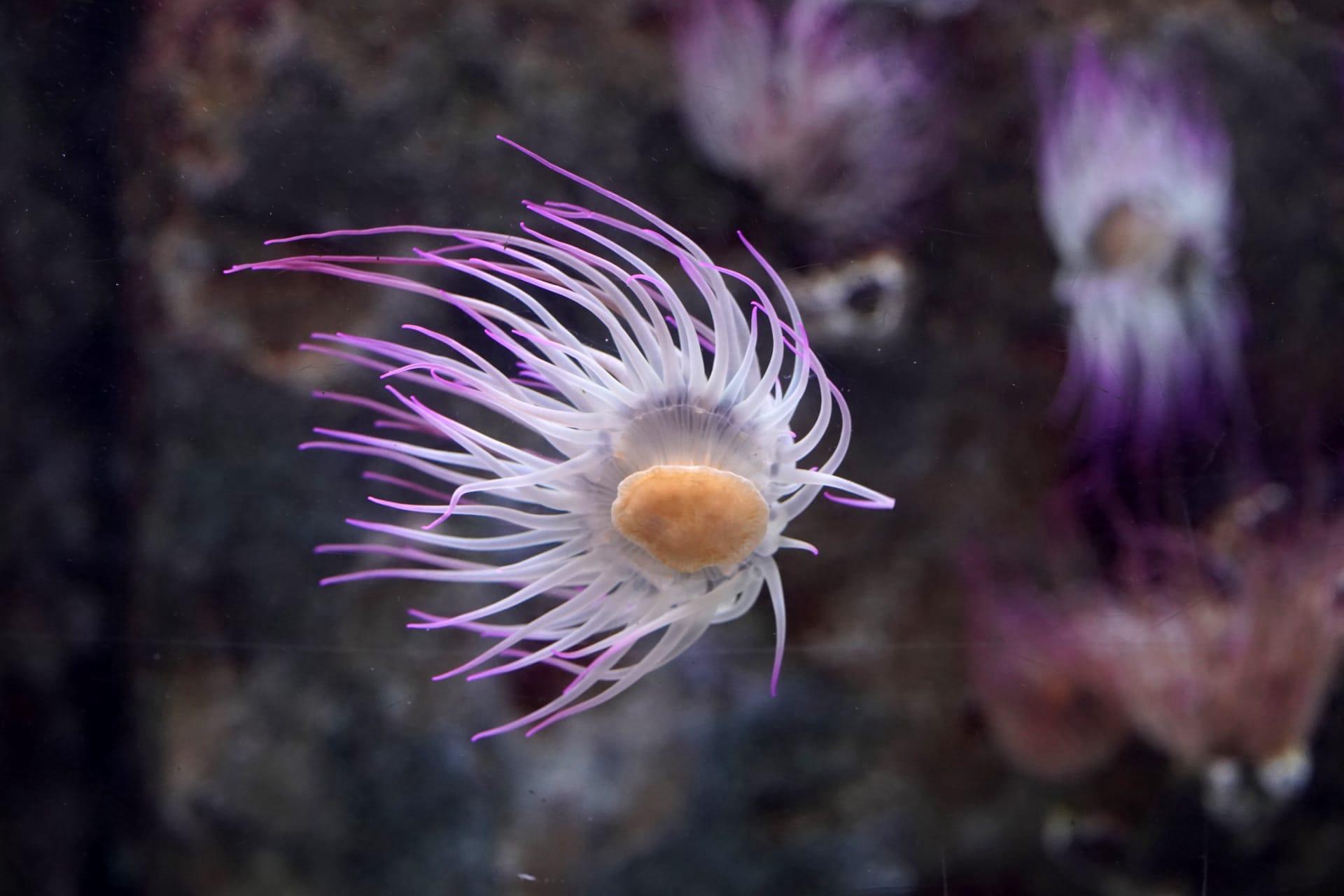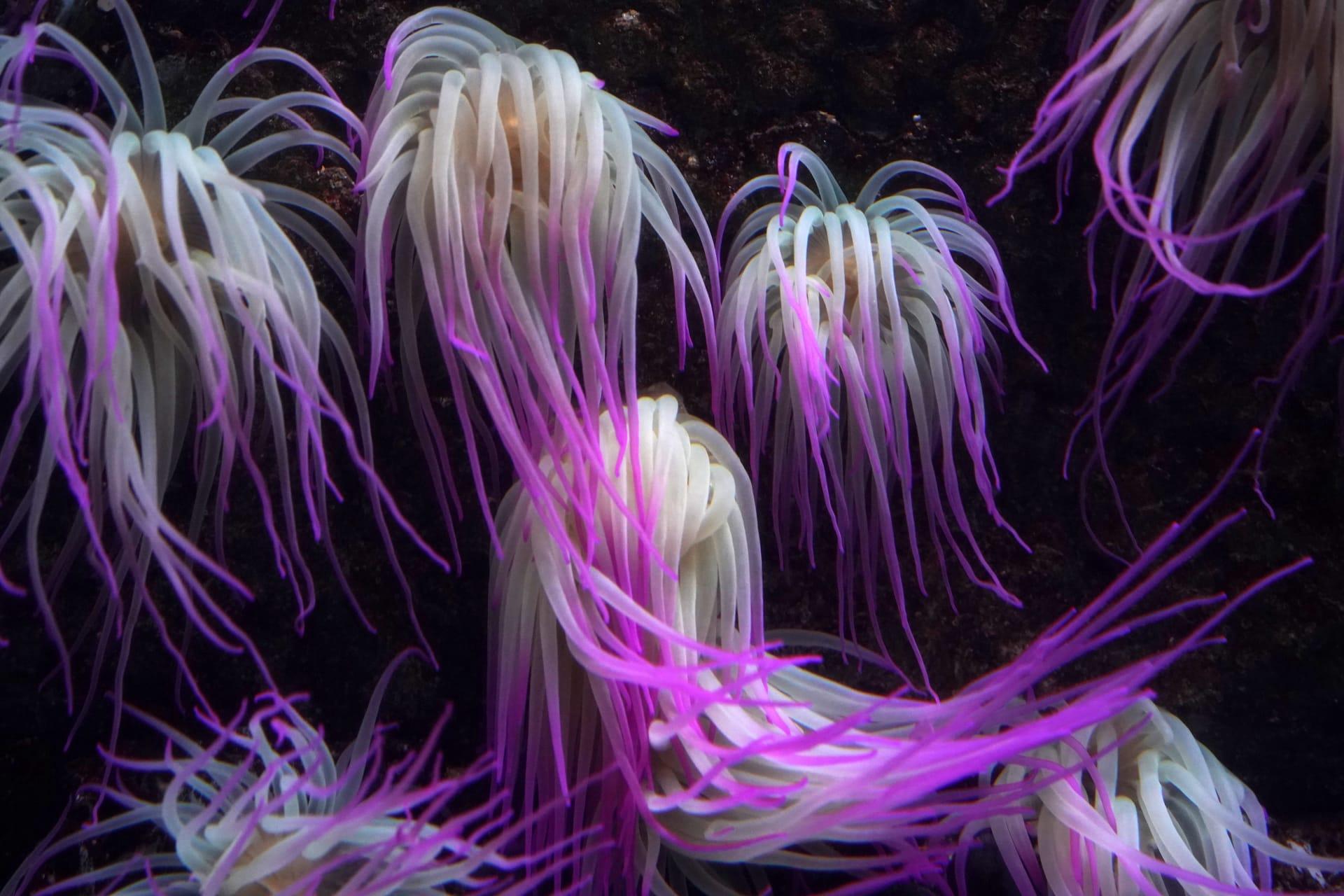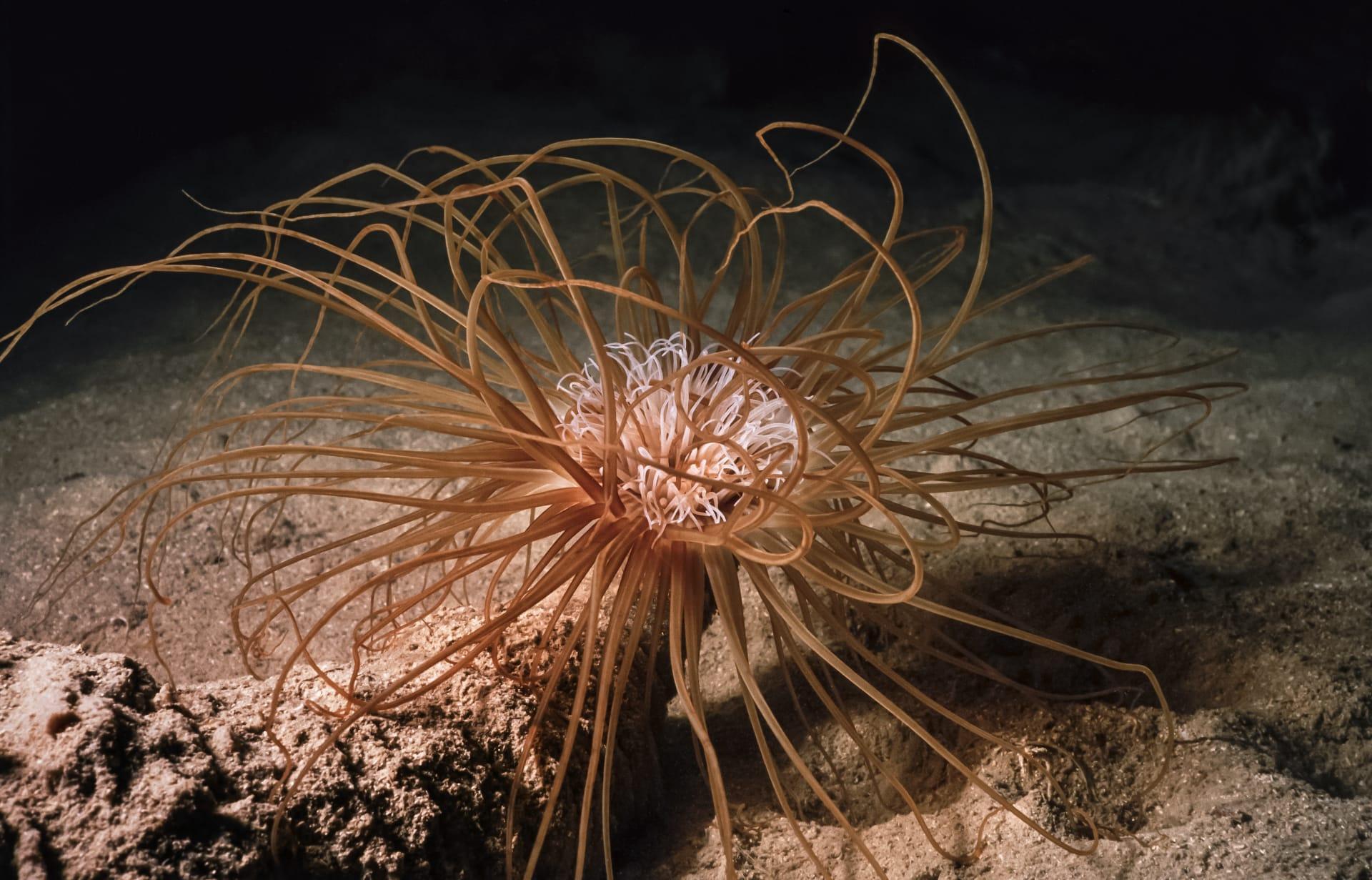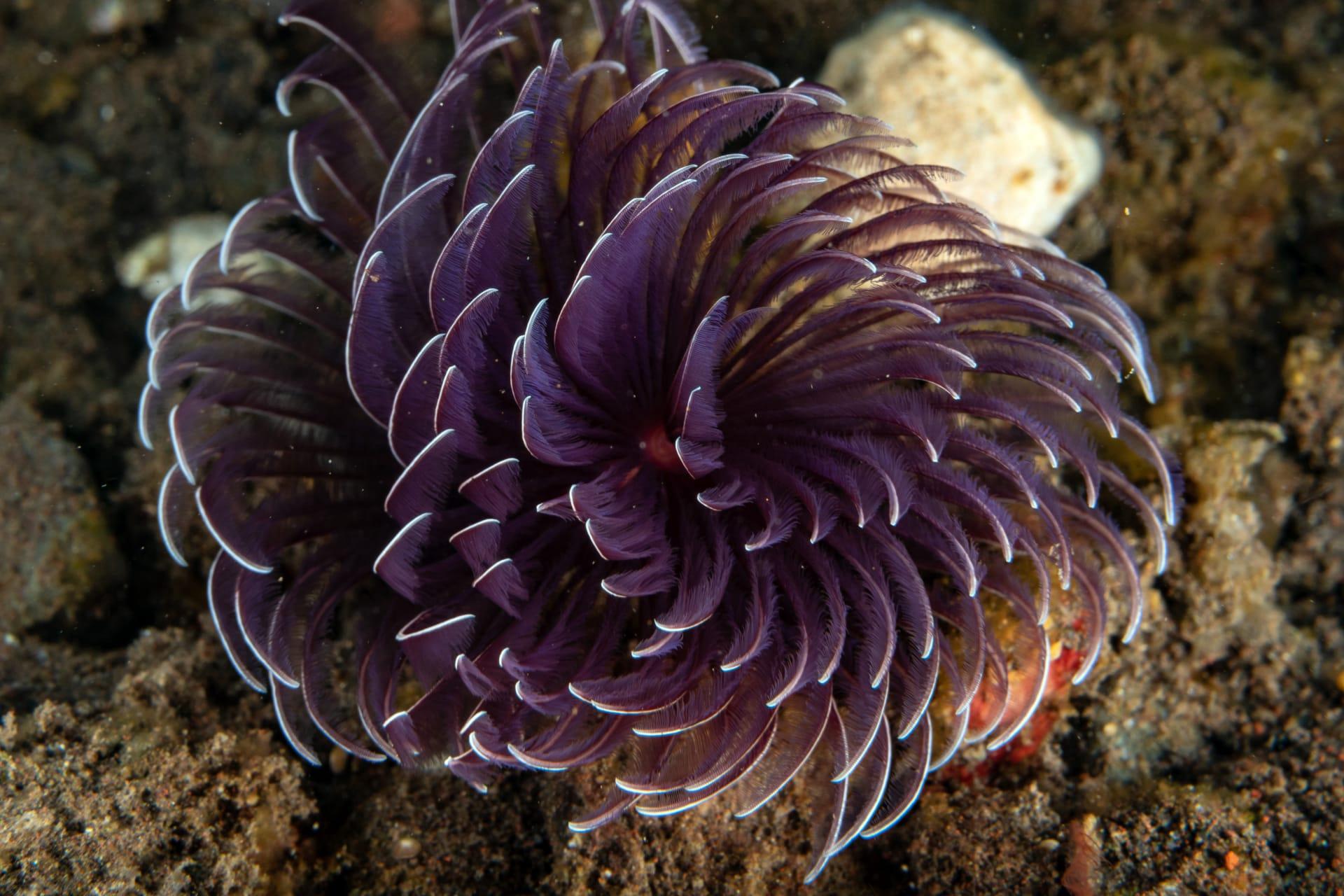Tube Anemone Trivia
- Home /
- Trivia Question /
- Animal /
- Tube Anemone Trivia
1
Question: What colors are tube anemones typically found in, and how do these colors benefit them?
Answer: Tube anemones, known for their stunning array of colors like neon blue, vibrant pink, and deep purple, owe these hues to fluorescent proteins. These colors are not just for show; they play a crucial role in protecting the anemones from harmful UV light and in attracting prey or potential symbiotic partners.
Question: How do tube anemones differ from their more familiar relatives, the sea anemones?
Answer: Unlike sea anemones, which attach themselves to surfaces, tube anemones live inside leathery tubes buried in soft marine sediments. These tubes, which can be up to 30 centimeters long, provide protection and a swift retreat if threatened. Also, tube anemones have a unique internal structure. They possess a pharynx and a complex gut, different from the simpler structure of sea anemones.

2
Question: Is it true that tube anemones have the longest lifespan among anemones?
Answer: Yes, tube anemones are notable for their longevity. They can live for up to 100 years, which is exceptionally long compared to other anemones. This extended lifespan is attributed to their slow metabolism and stable habitats.
Question: Do tube anemones sting like jellyfish?
Answer: Tube anemones do have stinging cells called nematocysts, similar to jellyfish, but their sting is generally not harmful to humans. These cells are primarily used for capturing prey and defense against predators. However, sensitive individuals might experience mild irritation.

3
Question: How do tube anemones reproduce, and are they hermaphroditic?
Answer: Tube anemones have a fascinating reproductive process. They are dioecious, meaning individuals are either male or female. They reproduce both sexually, by releasing eggs and sperm into the water, and asexually, through budding or fragmentation. This dual strategy ensures both genetic diversity and population stability.
Question: What role do tube anemones play in their ecosystem?
Answer: Tube anemones contribute significantly to their marine ecosystems. They act as bioindicators, signaling the health of their environment. They also provide habitat for various small marine creatures and contribute to the nutrient cycle by their feeding habits, which include consuming small fish and zooplankton.

4
Question: Can tube anemones be found in aquariums, and what are their requirements?
Answer: Yes, tube anemones are popular in saltwater aquariums. They require stable water conditions, with a temperature range of 22-25 degrees Celsius (72-77 degrees Fahrenheit), and a pH level of 8.1-8.4. Adequate lighting and feeding with small pieces of fish or shrimp are essential for their well-being in captivity.
Question: Are tube anemones active predators, and what is their hunting mechanism?
Answer: Tube anemones are indeed active predators. They use their long, slender tentacles, equipped with stinging cells, to capture prey. When a small fish or invertebrate comes into contact with these tentacles, it gets immobilized by the sting, and the anemone then pulls it into its mouth for consumption.

5
Question: How do tube anemones interact with other marine species?
Answer: Tube anemones often have symbiotic relationships with certain fish and crustaceans, offering them shelter in exchange for cleaning services or protection. Some small fish species, like clownfish, may live among the tentacles, gaining immunity to the anemone’s sting over time.
Question: What is the significance of the bioluminescence observed in some tube anemones?
Answer: Bioluminescence in tube anemones is a remarkable phenomenon. It's used for attracting prey and communicating with potential mates or rivals. This light emission is achieved through a chemical reaction within their bodies, creating a spectacular underwater light show.